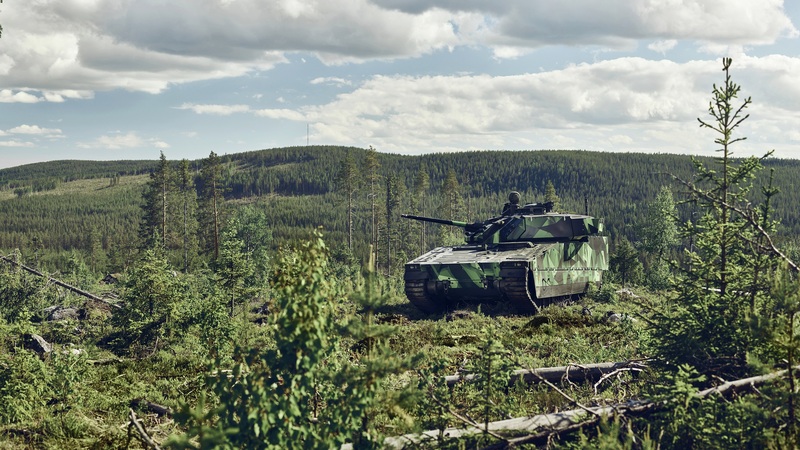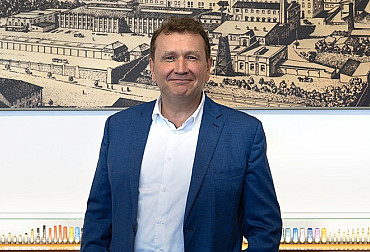CV90 IFV impressed Slovaks with its complexity, reliability and proven solution
CV90 tracked armoured fighting vehicles are currently deployed in 7 countries, namely Denmark, Estonia, Finland, the Netherlands, Norway, Sweden and Switzerland. The government there decided on 28 June to make Slovakia the eighth by approving the purchase of 152 tracked infantry fighting vehicles from BAE Systems Hägglunds AB.
 Picture: CV90 tracked armoured fighting vehicles are currently deployed in 7 countries, namely Denmark, Estonia, Finland, the Netherlands, Norway, Sweden and Switzerland. Slovakia will be the eighth country. (illustrative photo) | BAE Systems
Picture: CV90 tracked armoured fighting vehicles are currently deployed in 7 countries, namely Denmark, Estonia, Finland, the Netherlands, Norway, Sweden and Switzerland. Slovakia will be the eighth country. (illustrative photo) | BAE Systems
The process of acquiring new IFVs for the Slovak Armed Forces has been literally at rocket pace (Although negotiations and presentations did not begin in Slovakia until March 2021, Slovakia is ultimately more dynamic and faster in acquiring new IFVs than the Czech Republic.), despite the fact that the originally almost 60-strong project team nominated from the Slovak MoD in 2021 has shrunk to less than half, due to the ongoing events in Ukraine and the assignment of some colleagues to other tasks, as well as the impact of the Covid-19 pandemic. "The project team finally evaluated the bids submitted in the designated areas in the last week of February and the first week of March," says project manager Major Ludovít Varga-Korytár. "Fortunately, the participation of the project team members during the evaluation, as well as the testing, was sufficient for the timely evaluation of the bids received. In the area of the involvement of the Slovak defence industry, experts from the Slovak Ministry of Economy were also part of the evaluation team," adds Major Ludovít Varga-Korytár, who as project manager primarily managed the acquisition process. His deputy, Maj. Viktor Puškár, who was his deputy, focused mainly on technical solutions. The team also included experts from the Armed Forces and the VTSU Záhorie. Already in April, personal consultations were held with the advancing three countries to clarify specific information and agree on the quotation calculations.
Tests and final price
The evaluation process included vehicle testing in May at the Military Technical and Testing Institute (VTSU) Záhorie. The IFV LYNX, CV9030 on MK III chassis and ASCOD were delivered for testing, i.e. the same as in the Czech Republic. "The aim of the tests was to verify selected tactical and technical parameters, especially in the field of firing capabilities, driving characteristics, ergonomic characteristics and technical parameters within the technical capabilities of the VTSÚ. Also, the modernisation potential of the tested vehicles was evaluated as part of their life cycle in the future," says Colonel M. Janiga. And what all was evaluated? "When evaluating the bids, the main emphasis was placed on the overall cost of the vehicle, the price of integrated logistics support, operating costs, the percentage of involvement of the domestic defence industry, as well as compliance with technical requirements, delivery dates and interoperability with NATO standards. The total price was the sum of the individual prices for each component of the vehicle. In particular, the chassis, engine, electronic fire control systems, weapon systems, operational system, equipment, etc. The aggregate price for logistic support is then the sum of the individual prices for operator training, instructor training, spare parts kits, training documentation, operational documentation, repair documentation, etc. The operating cost is the sum of the operating costs of the individual systems depending on the number of kilometres driven, the number of motor hours worked, the number of shots fired, etc.," Zekucia elaborates on the selection process.
What convinced the Slovaks that the CV90 IFV was a good buy?
BAE Systems Hägglunds AB offered a modern, compatible and compliant tracked armoured combat vehicle and tracked armoured vehicle equipped with the required systems and associated support services. "The versions of the vehicles for the Slovak Armed Forces offer capabilities for operating on the modern battlefield and in joint operations now and in the future. Fully NATO-compatible and interoperable systems ensure excellent operability in various missions at home and abroad," says Colonel M. Janiga. CV90 vehicles are currently deployed in seven countries. Denmark, Estonia, Finland, the Netherlands, Norway, Sweden and Switzerland already have them. True, in different versions, for example 9035DK, 9035NL, 9030FIN, 9030N, 9040C or 9030CH. Also according to the end user of each country with 30, 35 and 40 mm calibre guns. "BAE Hägglunds AB's solution is completely based on existing and proven technologies, supported by innovations of most of the current users and also CV90 club members, which meet all Slovakian requirements and needs for use. An important factor is also the technical and technological potential of the vehicle for its possible upgrading in the future," explains National Armament Director Jozef Zekucia. It can be noted that the chosen chassis platform can also be fitted with a turret with a 120mm gun. Based on the results of the evaluation, the Ministry of Defence recommended the Swedish CV90 vehicle with a 35mm gun on the MK IV chassis to the government for approval of the purchase in the first place, while the second in the order was also a CV90 vehicle but with a 30mm gun. This was followed by a bid with the Lynx KF41 IFV and lastly the ASCOD IFV.
Quality over quantity
And what did the Chief of the General Staff of the Slovak Armed Forces say about the purchase? "These vehicles should help the Armed Forces, which are in relatively modest numbers, to balance any quantity with quality. That is why we looked for what is currently the best on the market and what has been tested," said General Daniel Zmeko. Gen. Zmeko also repeatedly stresses that until Slovakia has new equipment, the old equipment to be replaced must be fully functional and, if justified, continuously upgraded. It will be no different with regard to the tracked armoured vehicles. "The combat vehicles we have will be phased out of training, but they will neither be sold nor destroyed. They should be stored to be ready for defence if necessary," General Zmeko said. This approach is quite logical, and to some extent the Czech Republic and our Army could take a page from it.




















